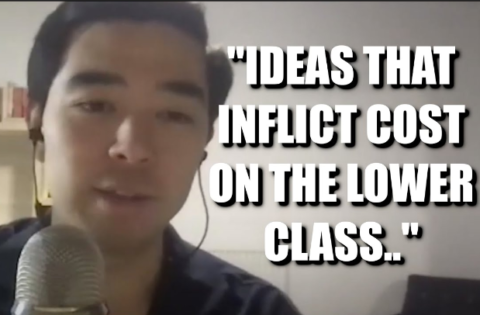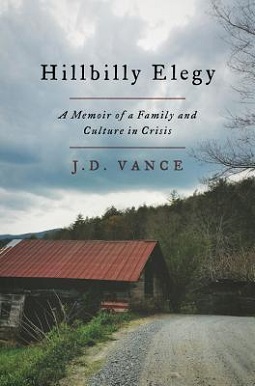That may explain the extraordinary amount of sucking up to Canada in this movie [Bowling for Columbine], which, while gratifying to insecure Canucks and self-loathing Americans, may be of less interest to third parties. Moore’s thesis, such as it is, is that America’s murder rate is the consequence not just of the country’s love of guns but of deeper currents of paranoia and fear in the American psyche. To that end, he crosses the Michigan border into Ontario, where one Canadian after another tells him that they don’t lock their doors. The level of guns per capita in Canada is similar to America but the murder rate is much, much lower. Ergo, it must be because Americans are living in fear while Canadians are much more socially progressive.
Whatever, dude. Unlike Moore, I have homes on both sides of the border and it’s the Quebec one I keep locked. By the time you read this, I’ll be in New York, but my home in New Hampshire will be unlocked, and so will my car at the airport, the key in the ignition, so I’ll know where to find it. By contrast, in Quebec it’s illegal to leave your car unlocked, even if you stop for a pee on an ice floe up by Hudson’s Bay. Pace Moore, Canada has vastly lower rates of handgun ownership. Long-gun ownership is much closer, but, statistically, Canadians are slightly more murderous than Americans in this sphere: in the US, there are 1.7 homicides per 100,000 long guns; in Canada, it’s 1.9. So European visitors to North America should be aware they’re more likely to be killed by a homicidal Canadian rifleman than an American one.
On the overall murder rate, if Moore’s interested in “cultural differences”, it seems odd that he should avoid the most obvious one. Alberta Report‘s Colby Cosh, a braver man than I, points out that black Americans are 13 per cent of the US population but commit over half the murders. Once you factor those out, non-black Americans murder at about the same rate as Canadians.
Mark Steyn, “Bowling for Columbine”, Steyn Online, 2002-11-30.
July 20, 2024
QotD: Comparing gun crime in Canada and the United States
July 19, 2024
The rise of the reactionaries – Gen X poised to pounce and seize
Andrew Potter tries to explain why Gen X are much more likely to support conservative policies than the groovy fossil Boomers and the painfully Socialized Millennials and GenZ’ers:
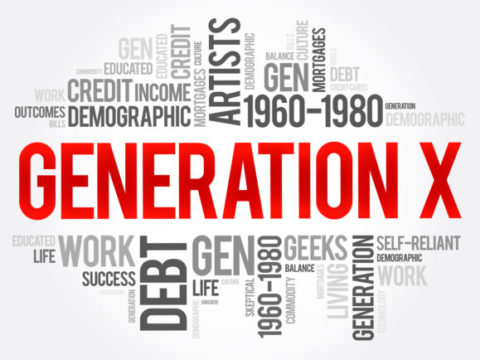
Generation X Word Cloud Concept collage background
Best Motivation Blog: What Generation Is X
As North American politics continues its rightward lurch, it is becoming increasingly commonplace to note the outsized role of Gen Xers in pushing this trend. In 2022, a Politico essay tried to explain “How Gen X became the Trumpiest generation“. That same year, an essay in Salon lamented how “of course Gen X was always going to sell out and vote Republican”. Writing in The Line last year, Rahim Mohamed wondered “how Generation MTV became Generation GOP?” These aren’t outliers – there is a whole sub genre of cultural commentary devoted to trying to explain just why Gen Xers are so right wing, compared to both their Boomer predecessors and the Millennials and Zs who followed.
This raises a couple of questions, the first of which is: is it even true? And if so, why?
On the facts of the matter, it appears that members of Generation X are, on the whole, more conservative than other generations, and this is especially true in the United States. For the past three or four years, polls have consistently shown that Gen Xers are more likely to see the country as going in the wrong direction, more likely to disapprove of Joe Biden, and more likely to support Donald Trump and vote Republican, than any other generational cohort. And while every generation tends to become more conservative as it ages, it is a tendency that accelerated under Gen X.
Pollsters have found similar support for these trends in Canada. An Abacus survey conducted last August found Gen Xers had the highest level of support for the Conservatives, with 41 per cent of those surveyed intending to vote CPC. And just this past June, the pollster Frank Graves released a series of charts tracking sentiment in Canada on a number of issues, including national attachment, social cohesion, and voter intention. He found significant intergenerational discord, with members of Gen X showing the highest level of support for smaller government, and Gen X males having the highest level of support for the CPC.
So why is this the case? How did the generation that fought (and won) the first culture war against conservatives, that launched the antiglobalization movement, that made heroes out of left wing icons like Kurt Cobain and Naomi Klein, become the most right wing cohort of all? Did we follow our Boomer parents’ hippies-to-yuppies trajectory in selling out? Or is there something else at work, beyond crass financial self-interest?
There’s probably at least something to be said for the “crass self-interest” angle. Despite the long-standing claim to being the first generation to do worse than their parents, the truth is, Gen X is raking it in. Starting right around the pandemic, Canadian Gen Xers quietly overtook Boomers as the generation with the highest average household net worth. It may also explain why alone amongst the generations, members of Gen X list “cost of living” as their most salient political issue, in contrast with both the older and younger cohorts who identify things like climate change, health care, and the environment as the most important issues facing Canada.
Airline Food During the Golden Age of Air Travel
Tasting History with Max Miller
Published Apr 9, 2024Back before airlines could compete with lower prices, they competed with the quality of atmosphere, service, and, of course, food.
I’d be happy to have this pot roast on the ground, let alone on an airplane. The meat is so tender that it falls apart, the vegetables and herbs give it wonderful flavor, and you get the added bonus of it making your house smell awesome as it simmers.
(more…)
July 18, 2024
An elite luxury belief – “Diversity Is Our Strength”
In a guest-post at Postcards from Barsoom, Spaceman Spiff lists some of the cargo cult notions that have captured the imagination of many “elites” in western nations, like “Diversity Is Our Strength“:
Multiculturalism is pursued in Western countries with a religious mania. It is difficult to imagine anything closer to a belief system for today’s upwardly mobile professional than advocating for diversity and inclusion.
Most of the world views ethnic and cultural mixing as a dangerous, civilization ending activity. A threat to be guarded against, not an opportunity to be embraced. This has been the conventional view throughout history in almost every society.
The modern Western formulation has challenged this. Mixing cultures, especially those hostile to assimilation, is not just to be tolerated but encouraged. Alien peoples must be sought out and imported to increase the ethnic and cultural mix. We must extend every courtesy to those fundamentally incompatible with us in customs and manners. The ultimate expression of this ambition is open borders, a concept viewed with deep hostility by almost all non-Western countries.
Whatever the origins of such policies, the implementers of these ideas are everywhere. They work in corporations, public sector bodies, and NGOs. We find them in Starbucks and Walmart. Diversity is everywhere even though it makes little sense as an end in itself.
How do we explain the enthusiasm with which middle managers and HR workers have embraced such a destructive idea, including its corporate version of job and education quotas?
Competency itself can be hard to find even in ideal conditions, so why hobble your chances like this? Why intentionally seek to create brittle heterogeneous environments that reduce productivity and increase strife?
The simple answer is that sophisticates don’t succumb to primitive notions like preferring their own. These are urges to be resisted, like hunger while dieting. Racism is old hat and any noticing of differences is racism. After all, our elites do not behave like this, so the goal is to be observably anti-racist, just like them.
Some look at our globalist elites and see them mixing with an international set. As they hobnob around the world they certainly socialize with foreigners. Indian elites, Arab elites, and Chinese elites all mix with their Western equivalents. We see them at events like Davos or the global climate change meetings. A multicoloured constellation of traitors from every country, all getting along with each other because they are nothing like their fellow countrymen, and everything like each other.
What the dullards in the corporate HR world miss is that this is not a celebration of diversity. Most of those elites are nearly identical. Many attended the same universities. All speak English, the international language. They have similar views, including contempt for their respective compatriots.
There is no diversity at the very top, just an elitist outlook most of them share, and contempt for the peasants who surround them. White, brown, or black, we all look the same from the cultural stratosphere. Cannon fodder for their Olympian ideas, but nothing more. The elite view of mass migration is indifference, not enthusiasm.
The street-level version takes the superficial aspects of this phenomenon and worships it as the end goal since the underlying homogeneity of the elites is largely absent. Their goal is not to seek out that which we have in common with others but the less sophisticated observation of what makes us different, what makes us more “diverse.”
The midrange talent in the West have therefore convinced themselves celebrating overt differences in the form of multiculturalism is modernity. It is the future promised by Star Trek and other communist dreams. Colour won’t matter, just like Martin Luther King promised, so long as we overlook the long predicted consequences of their dream, the lowered wages, the erosion of trust and the eventual polarization of competing groups within our own nations we once kept at bay with more considered immigration policies.
July 17, 2024
Trump selects J.D. Vance as his 2024 running mate
Presumptive Republican presidential candidate and former President Donald Trump announced that he has chosen US Senator J.D. Vance of Ohio as his running mate in the 2024 election:

U.S. Senator J.D. Vance speaking with attendees at The People’s Convention at Huntington Place in Detroit, Michigan, 16 June, 2024.
Detail of a photo by Gage Skidmore via Wikimedia Commons.
Donald Trump’s selection of J.D. Vance as his running mate is remarkable in more ways than one. There is Vance’s journey from the broken home in a poor, rural Ohio he wrote about in Hillbilly Elegy, to the Marines, to Ohio State, then to Yale Law School and to the Senate, and now a presidential ticket. Also remarkable is his transformation from a prominent “Never Trumper” — who once called his now – running mate “America’s Hitler” and an “opioid for the masses” — to an enthusiastic Trumpist in the vanguard of the New Right.
For some, Vance’s journey is simple enough to explain: it’s the story of a smart and ambitious “sellout” and an “angry jerk”, as one of his (ex-) friends from law school put it on X yesterday. To this crowd, Vance is only the most extreme example of a familiar story of Republicans kowtowing to the man who took over their party.
But Vance is a much more complicated — and interesting — figure than that.
Agree with him or not, he has undergone a sincere ideological conversion since 2016. That much was obvious to me when I followed him on the campaign trail in 2022. And it’s obvious from any speech or interview he gives. He is not someone who just parrots his party’s talking points. (He has also undergone an actual conversion: I recommend Rod Dreher’s interview with him on the day he was baptized and received into the Catholic Church in 2019.)
In the Senate, he hasn’t just voted with the GOP herd but teamed up with Democrats on a range of bills that stake out new ideological territory for Republicans. He makes some of Trump’s donors uncomfortable.
By picking Vance, Trump has made clear his project is about more than personality. The Republican presidential ticket now has a distinct ideological flavor. It has teeth. National Review‘s Philip Klein called the pick “another nail in the coffin of Reagan Republicanism”. (This is not a compliment at that magazine.) Vance is a prominent critic of U.S. involvement in Ukraine (for more on his foreign policy views, I recommend this piece by my colleague Isaac Grafstein).
He’s also economically unorthodox — and more relaxed about government involvement in the economy than many of his colleagues. He has backed a higher minimum wage and praised Lina Khan, Joe Biden’s FTC chair and a proponent of more robust antitrust policies.
Did these ideological considerations clinch it for Vance? I suspect a bigger factor was that in Vance, Trump saw someone who was welcomed into the elite — as Trump never has been — but who turned his back on it.
Before the VP nomination, before entering the political arena, Vance was known for his memoir about growing up poor in rural Ohio, Hillbilly Elegy. Helen Dale reviewed the book when it came out and had this to say about it and the author:
Hillbilly Elegy is an extended meditation on cultural and social capital. It asks seriously — and answers truthfully — this question: “what makes the upper-middle classes different?”
J.D. Vance (“Jaydot” to his friends) has written the best book about class by an American. It explains everything from the rise of Donald Trump to Leave’s win in the Brexit Referendum to One Nation claiming four Australian Senate seats. In answering the above question, Vance has also performed an inestimably valuable service to those of us engaged in public policy and political commentary: reading his book will teach you the folly of making rules — as my father often said when I was a child — “for people not like you”.
Vance is an Appalachian hillbilly, but also a graduate of Yale Law School. His “white trash” upbringing was as dysfunctional as that of many children in remote Australian Aboriginal communities or the slums of Glasgow: drug addiction, domestic violence, alcoholism, a revolving door of more or less useless father figures. His foul-mouthed, Tony Soprano-like grandmother (called Mamaw, pronounced ma’am-aw) saved him from the gutter and kept him looking at the stars, using any and every means possible.
Her husband, Vance’s Papaw, was a drunk. Mamaw warned Papaw that if he ever came home drunk again, she’d kill him. He did, so she doused him with kerosene and set him on fire. Fortunately, Papaw didn’t die. He did, however, give up the bottle, and in time became a model of decent, humane masculinity.
Like many of his Scots-Irish kin, Vance joined the Marines, grateful not only for the GI Bill (which funded his time at Ohio State), but also because more senior Marines and recruiters did things like show him how to balance a chequebook while steering him away from taking out a whopping 21 per cent loan for his first car. The Marines also taught him how to eat healthily (breaking an addiction to refined sugars) and helped him lose 45 pounds.
His description of a toffee-nosed law firm recruitment dinner at Yale — where he had to ask his upper-middle-class girlfriend (he called her secretly, while hiding in the loo) how place settings work (“What do I do with all these damned forks?”) — should be savoured as one of literature’s great comic scenes.
His personal story aside, Hillbilly Elegy also discloses the extent to which Vance’s people — the “poor whites” now forming the bulk of Donald Trump’s base — are not like the people who have spent fifty years making rules for them.
Vance is careful to avoid playing the Oppression Olympics common among spokespeople for disadvantaged minorities. He makes it clear his mother — who, by the end, collapses in a sleazy, spider-infested roadside motel with a needle in her arm — can only use entrenched adversity to get a moral get-out-of-jail-free card for so long. He views other hard-up hillbillies — in his own family and outside it — with the same unsentimental eye. At some point, the excuses have to stop.
Americans Repeatedly Routed – The Korean War – Week 004 – July 16, 1950
The Korean War by Indy Neidell
Published 16 Jul 2024Elements of the US 24th Division, the only American one that’s arrived in force in Korea so far, take on the North Korean forces aiming for Taejon, but they are badly — and easily — defeated each time. In the center and the east coast it’s the ROK- the forces of the South — that are reorganizing and getting into position to try to stop the enemy. And Douglas MacArthur is officially appointed commander of all UN forces in Korea.
(more…)
What do “‘elf an’ safety” concerns have to do with VIP protection details? A lot, it seems
I haven’t been following every twist and turn of the post-assassination-attempt story, but this one really does have me scratching my head. According to the person who had the overall responsibility, the reason the shooter’s location was not properly secured was due to health and safety concerns … for the Secret Service agents, rather than the person they were supposed to be protecting:
Oddly, the roof that the counter-sniper team was occupying visually seems to have a steeper pitch than the one identified as too dangerous:
Since we’re looking at the biggest news event of the year (so far), let’s consider what N.S. Lyons calls “The World Spirit on a Golf Cart“:
I’m going to do something I normally resist doing and offer some hot take thoughts based on recent events. Not on the details of the attempted assassination of Donald Trump specifically (there’s already plenty of that out there), but on what feels like his role in our general moment in time.
In the minutes after Trump dodged a bullet on live television, I joked on Substack Notes that “one does not simply shoot Napoleon”. This proved open to misinterpretation in a few different directions, but what I meant was this:
Napoleon famously led from the front, charging time and again into a hail of bullets and cannon shot, and yet not once was he ever seriously injured. In fact his luck seemed so impervious that he quickly acquired a legendary aura of invincibility. This became part of his overwhelming charisma – meaning not just his social charm but the inexplicable sense of unstoppable destiny that he seemed to exude. This aura proved so captivating to normal men that when he escaped from exile and landed alone in France to … well let’s call it make his “reelection” bid, the army sent to stop him promptly surrendered and switched sides at the mere sight of him.
Napoleon had seemed to become something more than mere mortal: he was a living myth, a “man of destiny” whom Providence had handed some great role to play in history (for good or for ill) and who therefore simply couldn’t be harmed until that role had been fulfilled and the world forever changed. This is why when Hegel witnessed Napoleon he described him with awe as “the world-spirit on horseback”: he seemed truly an “epic” figure, the sweep of history seeming to have become “connected to his own person, [to] occur and be resolved by him” alone, one way or another.
This, it should be noted, used to be the standard way of explaining how the course of the world’s history was shaped. Thus was Alexander understood; thus was Caesar. Only after the Enlightenment and the onset of rationalistic modernity did this mythic view begin to wither away with the broader disenchantment of the world, to be replaced by a depersonalized and mechanistic view of historical causality.
We’re so back now though. Donald Trump has always been something of a bafflingly lucky man, as even his enemies are prone to admit. But witnessing him, in response to whatever whisper of Providence, tilt his head at precisely the right moment and degree to cheat death, I and it apparently many others can’t help but feel like he may be more than lucky – that he now seems as much myth as man.
And when he emerged, shaking off his bodyguards and streaked with blood, to stand and pump his fist in defiance beneath the American flag (as captured by a photographer who just happened to be there at the perfect place and time to reveal an era-defining symbolic image), this was rightly described by awed watchers in the stands and across the nation as “epic”. Maybe epic is the word that comes to their mind only because it’s become internet parlance for “cool shit”. But I suspect that they may mean more than that, that they may be attempting to describe the deeper charisma of someone who really seems to somehow have become a man of destiny, and that they intuited the scene as truly epochal in its meaning.
Earlier, Mark Steyn wondered whether the security failures in Butler were caused deliberately or through utter incompetence:
Let’s cut to the chase — the US Secret Service: In on it? Or just totally crap?
Well, I’ve thought the Secret Service were rubbish not just since we learned of the Cartagena hookers but for at least another decade before that. And increasingly, when it comes to American officialdom — from Kabul to Uvalde — to modify Henry Ford, you can get it in any colour as long as it’s bloated, lavishly over-funded and entirely dysfunctional.
And yet and yet … it’s hard to believe even these guys (plus their bevy of five-foot-two-eyes-of-blue Keystone chorus girls) could be this crap. Assuming for the purposes of argument that the body on the roof is actually that of the perp, a goofball barely out of high school hatched a plan to have Donald Trump’s head explode in close-up on live TV – and, wittingly or otherwise, the world’s most flush money-no-object security state did their best to help him pull it off.
In any accountable “public service”, the Secretary of Homeland Security and the Secret Service gal would already be gone. By this point after the Argentine invasion of the Falklands, Lord Carrington (Foreign Secretary), Sir Humphrey Atkins (Lord Privy Seal) and Richard Luce (Minister for Latin-American Affairs) had already resigned: see my column of September 17th 2001 expressing in my naïve Canadian way mystification as to why, six days later, all the 9/11 flopperoos had not been similarly dispatched.
Because that’s how it goes in the Republic of Non-Accountability, and, if he’s harbouring any doubts about his fitness for the job, Mayorkas figures it can wait till someone takes out RFK Jr. This is a depraved political culture.
What’s the old line? When seconds count, the police are minutes away? Not at a Secret Service event: even when the police are on site in massive overwhelming numbers, they’re still minutes away.
July 16, 2024
Real world economic experiment to test Card & Krueger’s minimum wage theory
Tim Worstall points out that the California state government is — intentionally or not — running an interesting economic validation of the Card & Krueger study in New Jersey that seemed to show raising minimum wages didn’t have a negative impact on overall employment:
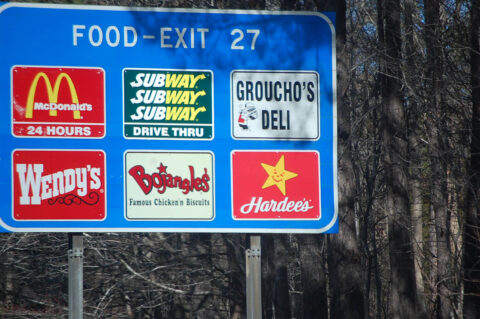
“Fast food” by Daniel Barcelona is licensed under CC BY 3.0 .
For think back to that New Jersey minimum wage study, Card and Krueger. That showed that acshully, employment in fast food joints rose when the minimum wage went up. Now, I’ve been saying for a long time now that I think there’s a fallacy of composition there.
“Fast food” isn’t “fast food”. There are — at least — two sectors here. There’re those big national chains, lots of advertising, franchisees, MaccyD’s and the like. Then there’s a vast hinterland of Mom and Pop places. The financial structures are entirely different. The chains are capital intensive. I think I’ve seen that buns for burgers come in pre-cut. Salad definitely arrives in bags, already shredded. There’s no prep – not even prep areas in those kitchens. Mom and Pop run differently. One reason I know is because I’ve owned and run one. There’s an awful lot of labour that goes into turning blocks of stuff into those sandwiches. Stuff is sliced, diced, soups are cooked on site, from identifiable ingredients, bread is sliced and on and on.
No, this isn’t to try and riff off The Bear. But there is a difference in economic structure between those who are large corporates vending fast food and not-large corporates vending fast food.
And I think — think, me, I do — that the problem with the Card and Krueger study was that it didn’t account for this. A change in the general labour rate might push people to the capital intensive end of this market. Certainly could do, it would be possible to model it that way. Which means that using only the data from the fast food chains, as C&K did, would pick up only part, perhaps half, of the reaction. The Mom and Pops shed labour, the capital intensive chains modestly pick it up, the net effect is — well, the net effect could be anywhere actually.
Which is what makes this CA minimum wage change so interesting. Because the $20 an hour applies only to those working for the big national chains — or their franchisees.
Mom and Pop have to pay the normal CA minimum wage, not the $20. So, the labour intensive part of the overall system has just been handed a competitive advantage against the capital intensive end of it. We would expect, could possibly measure, that the overall employment outcome is positive.
No, really. I’d be willing to defend the idea that it could be, certainly. Note that “could”. So, we’ve two sectors, capital intensive, labour intensive. We’ve just said that the capital using guys now have to pay more — much more — for their labour than the labour intensive guys. The capital intensive guys can only respond by higher prices or worse service (ie, fewer labour hours). The labour intensive sector might end up picking up so much of the traffic that they expand employment — expand employment so much as to actually increase overall fast food sector employment. By shifting from the capital to the labour intensive sectors.
This should be studied, right? Now, my actual economic skills — rather than ruminations — are zero so it’s not going to be me checking this out. But I recommend it as something for someone looking for a PhD subject to think about. Possibly even someone more senior than that looking for a point upon which to make their bones.
Does a higher minimum wage that only — only — applies to the capital intensive portion of an economic sector like fast food actually increase employment? By shifting the sector over to the more labour intensive sector not subject to that higher minimum wage?
Logically, it could, significant empirical work would be necessary to show it though.
July 15, 2024
Assassins
Political assassination has been thankfully rare in recent decades (with a few exceptions), and the attempted assassination of Donald Trump in Butler, Pennsylvania is the first such attack on a US president or presidential candidate to make the news since Ronald Reagan survived John Hinckley’s attempt in 1981:
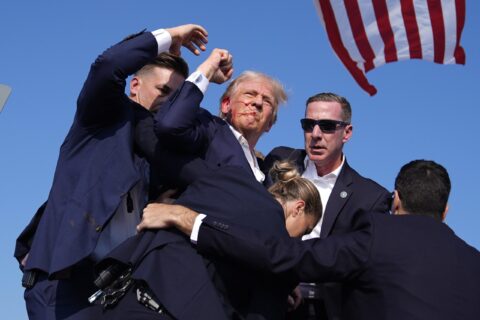
Donald Trump, surrounded by Secret Service agents, raises his fist after an attempt on his life during a campaign speech in Butler, PA on 13 July, 2024. One spectator was killed and two others were reported to be in critical condition. The shooter was killed by Pennsylvania State Troopers, according to reports in the succeeding hours.
The attempted assassination of Donald Trump is unfortunately far from the first against an American president. Four presidents have been assassinated (Abraham Lincoln in 1865, James A. Garfield in 1881, William McKinley in 1901, and John F. Kennedy in 1963), but our history has seen numerous other unsuccessful shootings targeting the nation’s chief executive: against Andrew Jackson, Teddy Roosevelt, Franklin D. Roosevelt, Harry Truman, Gerald Ford (twice), Ronald Reagan, and now Trump.
The first of these unsuccessful attempts came against Andrew Jackson in 1835. An unemployed house painter named Richard Lawrence came at Jackson with a pistol while the president was in the U.S. Capitol attending the funeral of South Carolina representative Warren R. Davis. Lawrence pulled the trigger and attendees heard a crack, but the pistol misfired. Jackson turned on Joseph and swung his cane at the assailant, who took out another pistol, which also misfired. A melee ensued with Jackson screaming, “Let me alone! Let me alone! I know where this came from”, suggesting that Jackson’s Whig enemies had sent the assassin. Among those who tried to subdue Joseph was Davy Crockett, who later said of the incident, “I wanted to see the damndest villain in the world and now I have seen him”. Jackson was unharmed but became more paranoid as a result of the close call. It was a contentious period in American politics; the New York Evening Post deemed incident “a sign of the times.” Joseph spent the rest of his life in a mental institution.
The next three shootings of presidents were unfortunately successful ones; it’s remarkable to consider now that these three assassinations took place over just 36 years, from 1865 to 1901. (What must Americans have thought of “our democracy” then?) The next failed attempt did not come until Teddy Roosevelt’s ill-fated effort to reclaim the presidency in 1912 as a third party candidate. In October of that year, Roosevelt was campaigning in Milwaukee — the site of this year’s Republican convention — when a man named Joseph Schrank shot the former president in the chest. Roosevelt was fortunate that his folded 50-page speech was in his chest pocket and slowed the bullet. The bullet did pierce Roosevelt’s chest but did not penetrate too deeply. The crowd attacked Schrank, but Roosevelt asked that they not harm him, which probably saved Schrank’s life. Roosevelt then went ahead with his speech, famously saying, “it takes more than that to kill a bull moose”. This event has perhaps the most similarities to the Trump shooting, as both Trump and TR were ex-presidents looking to return to the White House, and both Trump and Roosevelt showed defiance after being bloodied.
TR’s cousin Franklin was president-elect in February 1933 when an anarchist named Giuseppe Zangara fired five shots at him and Chicago Mayor Anton Cermak in Miami. The would-be assassin missed Roosevelt but hit Cermak and four other people. Roosevelt was likely saved by Miami housewife Lillian Cross, who pushed Zangara’s arm as he was firing. A gravely wounded Cermak told Roosevelt, “I’m glad it was me instead of you”. He died on March 6, two days after hearing Roosevelt’s inaugural address over the radio. Zangara was executed by electric chair two weeks later.
[…]
Before the Trump attack, the most recent shooting of a president was John Hinckley’s attack on Ronald Reagan in 1981. Reagan was early in his first term and was leaving a speech at the Washington Hilton (now referred to as the Hinckley Hilton by Washingtonians), when Hinckley opened fire, hitting Reagan press secretary Jim Brady, Secret Service agent Tim McCarthy, and DC police officer Thomas Delahanty. Reagan’s protective detail threw him to the floor of his limousine and, thinking he was unharmed, took off back for the White House. Like Ford, Reagan did not like being under a pile and thought the agents had broken his rib. When the president coughed up blood, agent Jerry Parr recognized that Reagan had been hit as well and immediately redirected the limo to George Washington Hospital. This decision saved the president’s life. Even so, it was a close call. A paramedic thought upon seeing a gray-colored Reagan, “My God, he’s code city”, ER lingo for someone who isn’t going to make it.
I have to admit to knowing a bit more than the average person about prior presidential assassination attempts thanks to Stephen Sondheim’s soundtrack to the musical Assassins, which I’ve enjoyed listening to many times over the years.
Niall Ferguson on the historical context of political assassinations (the rest of the article is behind the paywall:
“There was a reason why Rome of Julius Caesar and Florence of the Medici were such dangerous places. Assassination was a feature, not a bug, of republican political systems. However, modern American medicine and the overblown security provided to presidents and former presidents together make it quite likely that both candidates will make it to November 5.”
I wrote those words on July 2. Eleven days later, events proved me both right — assassination is part and parcel of republican political systems — and wrong: this has ceased to be true of the United States.
What happened in Butler, Pennsylvania, on the evening of July 13, is in equal measure shocking and baffling. An inch or two further to the left and the bullet that grazed Donald Trump’s ear would have penetrated his skull and very likely killed him. A slight gust of wind, a tremor of the assassin’s hand, an unexpected move by the former president — for whatever tiny reason, Trump lived to fight another day.
The shooter, Thomas Matthew Crooks, a 20-year-old man from nearby Bethel Park, was a registered Republican but had made a $15 donation to the liberal ActBlue political action committee on the day of Joe Biden’s inauguration, when he was 17. Even more puzzling, this young man (who was barely a teenager when Trump was elected in 2016) was able to take several clear shots at the 45th president from the roof of a factory 130 yards away from the stage of Trump’s rally.
How did the Secret Service snipers stationed just 430 feet away not spot Crooks climbing into position on the roof, when at least one member of the public did see him and claimed that he had warned them? It is hard to think of a good explanation.
And what of the consequences? There are those who would have you believe that history is governed by vast impersonal cycles and that events such as this are mere epiphenomena, historical trivia. It is a claim as old as it is false.
The editors at The Line suspect the US Presidential election has now been decided months before any ballots are cast:
The prospect of someone deciding to take the rhetoric to its most extreme albeit logical conclusion — if Trump is a threat to life as we know it, the threat must be ended — cannot come as a surprise. At this time, we don’t know much about the 20-year-old shooter, Thomas Matthew Crooks, beyond his name, the fact that he was a registered Republican but, also, a one-time donor to a progressive political action committee. We await more information, and hope there aren’t many more like him waiting to try again, or retaliate against a Democratic politician.
For now, we at The Line are pondering what’s next. July 13, 2024 is going to be one of those days that future historians look back upon with a certain wistfulness. If the wind was a little harder, a bullet lands a few inches in another direction, and Donald Trump is dead. In this timeline, though, the shooter missed, and now America is going to witness first hand the problems with relying on violence to secure political outcomes. Namely, it very often backfires.
Because we’ve taken the other fork in the road. We now exist in the other timeline of history — the one in which Donald Trump is now the far-and-away favourite to win a second term.
We could be wrong about this. No one can predict the future, and there are lots of scenarios still unplayed out. Does Biden step down in favour of Kamala Harris? Does the shooting turn out to be a hoax perpetrated by Trump or his supporters? Does Trump suffer a heart attack between now and November? Does someone else get shot? Any of these possibilities is still available, and any one could further change the outcome.
However, at this moment in time, it was hard for us to look at the picture of Trump standing up once the bullets had struck, demanding to be seen by the crowd even as his Secret Service detail tries to get him off the stage, pumping his fist in the air, all framed by an American flag, and think anything but “Well, that’s the ballgame.”
The Line is no fan of Trump, but we are also political observers, and Trump’s handling of the assassination attempt, as political showmanship, was absolutely perfect. Trump displayed an incredible presence of mind in the midst of mortal peril. While the echoes of the gunshots were still ringing, he understood that he needed to forgo some small degree of further protection in order to show his supporters — and the world — that he was fine. No one has to like the guy, or ignore the real risks he poses both to American and Canada, but we do have to respect how he handled that moment, if nothing else. It demonstrated calm nerves and competency under literal fire.
The response shored up Trump’s strengths in a way that highlighted Joe Biden’s comparative frailty. The shooting will absolutely supercharge Trump’s supporters, his base, his cult. There’s no coming back from it.
We don’t know what more to say here, folks. For the record, we at The Line rule out nothing at this early juncture. But if the momentum of history holds on its current track, there’s a very good chance that the next American election is over weeks before anyone bothers to cast a ballot.
From Utica to Chicago, then on to New Orleans
A.M. Hickman takes Amtrak on a pre-wedding rail tour of the United States. We pick up the narrative in Utica, New York, whose Amtrak station apparently gives off a North Korean/Potemkin village vibe:
The gargantuan marble-columned Utica train station sleeps like silver spoons in a dusty drawer of a great house. The bones of Utica have the smell and patina of old finery laid out at an estate sale in a great and crumbling chateau; its patrons long dead or doddering — if one walks quietly, they can hear their ghosts. I sip a porter at the trackside pub, staring out into the maze of empty streets as the pub’s speakers play the song “Allstar”, an upbeat tune released in 1999 by the one-hit-wonder band Smashmouth. And the barkeep looks as if the year 1999 never ended; cigarette smoke curling around his blonde frosted tip hairdo, leaning against the brick walls of the tavern’s courtyard in his sunglasses and FUBU-brand track jacket, kicking at the dirt in his stained white Reeboks.
No one else is at the bar — one wonders if Utica is being maintained in North Korean style, subsidized by the state to keep up appearances, spray-painted to the “uncanny valley” hue of sham vitality lest a train passenger should step off for a smoke break and start asking too many questions. I ponder this as the song continues — “Hey now, you’re an All-star, get your game on on, go play // hey now, you’re a rockstar, get the show on, get paid …” The barkeep ashes his cigarette and glowers, casting furtive glances toward the empty bar. I pay the tab, glad to be departing this weird, empty place in the heart of American Pyongyang — where one gets the disturbing sense that they may be being watched.
The train arrives, and Keturah is with me. If Amtrak’s Lake Shore Limited were one’s first introduction to the Amtrak system they might get the impression that it’s a long, metal, track-bound Greyhound bus. The passengers are sullen and bored with earbuds universally donned. Cheerio dust covers our seat, and a heavy-set hustler-looking character in an Eminem t-shirt is sawing wood, snoring deeply, displaying all of the textbook symptoms of undiagnosed sleep apnea. Worst of all, the train’s bright white lights — the sorts of fluorescent lights one sees inside of hospitals and Wal-Marts — stay on all night, angled directly into our eyes, and we fitfully sleep as the train rattles at 110mph all the way to Chicago. The trip takes fifteen hours.
For Keturah and I, this ride is our last bit of time together before separating for a month. We’d both been taken with the romantic idea of parting ways for a few weeks before our wedding — and at Chicago, she’d head to southern Illinois to see her great-grandmother, and I’d jump aboard the City of New Orleans train to soak in the sinful humidity of the Crescent City. From there, I’d run a nearly 8,000-mile circuit around the United States — and if the trains ran on time, I’d arrive at our wedding in Upstate New York on time. Sleepy-eyed and rueing our separation, I saw her off onto her train.
I wandered Chicago’s Union Station alone, rattled by the gravity of her absence already, and several hours later, I hopped onto my own southbound train, dreaming of the woman who would become my wife.
A “vibe shift” takes place as I step aboard The City of New Orleans. The workers are a jazzy bunch, obviously natives of the city below sea level, all of them jocular and energetic; smooth Louisiana tones drip from their smiling craws — “good evening baby, we don’t mind you playing music in the cafe car — but if it’s the nighttime hours it had bettuh be smooth!”
Unlike the Lake Shore Limited, this train is equipped with a “Superliner” viewer car with domed glass windows that afford passengers views of the scenery. Most long-distance routes are equipped with these — except the routes that go in and out of New York City, as the train tunnels there don’t have the clearance for these tall double-decker cars. But the view of the scenery doesn’t matter much on the ride south through Illinois and Mississippi. This stretch of track is, in the colorful words of one especially talkative train attendant, “a damned old tunnel of green trees and shit“. Nonetheless this “tunnel” had a soothing effect as we sped southward, and I crawled down under the Superliner’s benches to sleep.
In New Orleans, I had the great pleasure of staying with one C. Sandbatch, a native son of New Orleans, and Covington, and Mississippi, and Kentucky, and, well — practically every location in the American South but Alabama or Georgia. A polymath of Southern geography, history, and literature, Mr. Sandbatch quite naturally opened his home to me, offering the air mattress in his high-ceilinged back room as organically as the forest offers its glens and creek-beds to a transient jackrabbit or wren. And quite naturally, he stationed himself upon the porch of his sparsely-decorated shotgun shack house, musing on his weirder years, relating tales of corrupt Parish Presidents and bayou dramas, and offering reflections on the more nuanced elements of Deep South race relations, New Orleans musical genre-bending, and Southern ecology.
Leaning back onto the wood of the old porch — which had been under some eleven feet of water during Hurricane Katrina — I listened to him speak in slow, eloquent tones as the breeze rustled the palms on the street. His cigarette smoke hung above the sleepy-eyed cats, and the wine in my cup was lukewarm in the humidity. We drove all over the city in his ailing old jeep, a vehicle whose transmission had the habit of “burping” in traffic, and we flitted in and out of cafes and bars, each of which seemed to be a sort of checkpoint in Mr. Sandbatch’s memory. Wistfully he drank as he spoke, and I felt myself slipping into the ease one knows only when wandering a city with one of its own sons.
What Pioneers ate on the Oregon Trail
Tasting History with Max Miller
Published Apr 2, 2024Cornmeal cakes and the bacon in whose fat they were fried
City/Region: Oregon Trail
Time Period: 1856The Oregon Trail was tough. It was gruelling, food could become scarce, and even the drinking water was mostly unpalatable (not to mention the threat of dysentery). Emigrants packed well over 1,000 pounds of food into their wagons, staples like flour, bacon, coffee, sugar, rice, and hardtack (clack clack). They also relied on finding food like edible plants, fish, and game along the way.
These cornmeal cakes went by many names, including johnny cakes and hoe cakes. The ingredients are simple, but they’re surprisingly delicious. Without anything to leaven them, they’re a bit dense, but they taste great. The flavor is a combination of cornbread, sweet molasses, and bacon, kind of like a 19th century McGriddle. This is a great recipe to play around with. You could add some spices for a fancier version, swap out some of the water for milk, or use other fats or sweeteners.
(more…)
July 14, 2024
Japan’s New Defense plan, 100 million dead – WW2 – Week 307 – July 13, 1945
World War Two
Published 13 Jul 2024Japan is aware that soon enough the Allies will invade the Home Islands, and they will mobilize absolutely everything and everyone they can for their defense plan, “The Glorious Death of the 100 Million”. In the meantime, Allied carrier forces keep hitting them, the Australian advance on Borneo continues, the Chinese advance on Guilin continues, the Allied rebuilding of Okinawa continues, and American preparations are nearly complete for a test detonation of an atomic bomb.
(more…)
July 12, 2024
They’ll confidently claim they’re merely “anti-Zionist“
James Pew on the disturbing rise of antisemitism in all western nations that got turbocharged by the October 7 atrocities by Hamas terrorists against Israeli civilians on the Gaza border:

“Student encampments – UofT – Camping at the university” by Can Pac Swire is licensed under CC BY-SA 2.0 .
Jew hatred in this country, and around the world, is something I completely miscalculated. Like so many others, including many Jewish people, I naively thought that antisemitism was a thing of the past. Or at least, it was something that had been greatly diminished to the extent that it ceased to be much of a problem. Tragically, I was wrong about this.
The global expansion of Islamo-fascism and the mixing of pro-Jihadism with leftist critical social justice activism, is something I also, similarly, underestimated.
When I think of October 7th I am overcome with disgust and sadness. The world should be aligned with Israel, and aggressively opposed to Palestine/Hamas (Hamastinians) and the corrupt United Nations Relief and Workers Agency (UNRWA). That in many cases it appears to be the other way around, that many political leaders, media, and insufferable celebrities support Hamas’ terrorist aspirations, their evil nonsensical movement to wipe Israel off the face of the planet, is something that is incomprehensible to me.
In one of the late Rex Murphy’s final National Post columns, he proclaimed that “Hatred of Israel is the great moral disorder of our time”. Placing the blame for the “red-ignorant core” of the post-October 7th rise in antisemitism on “woke campuses”, Rex wrote the following concerning the legitimacy of the state of Israel:
Dear Israel is but a spit of earth on a huge globe. Three years after six million Jews were put to torture, humiliation, whippings, rape, medical experiment, starvation, and vile death, was it not surely time — time for all the nations of the Earth who had reached some moral understanding of life and government — to allow Jewish people time to rest, time to mourn, time to see what and who might be left of them.
While I’m the first to admit that no nation, including Israel, is beyond criticism, I feel there is both a time and place, and an appropriate proportionality that should be reflected in a fair critical analysis of any nation. When Douglas Murray made the point at the recent Munk debate that no serious person ever questions the legitimacy of the nation of Pakistan — a nation founded in a way similar to Israel — like they question and challenge the legitimacy of Israel, so-called anti-Zionists claimed that the audiences’ embrace of Murray’s logic was simply evidence of their Islamophobia.
Murray expanded on his Pakistan/Israel comparison by asking the audience to imagine someone who feels that Pakistan is not legitimate and therefore should not exist at all. Imagine also, that this person holds no antipathy directed at the Pakistani people. Preposterous! Yet the anti-Zionists ask us to believe this in regards to Israel. The anti-Zionist will look you straight in the eyes, and with all the sincerity in the world, express their belief that Israel should not exist, and absurdly, implore this does not mean they hate Jews (the majority of Israelis). Why in the case of an analogy where Pakistan is at stake, is it so clear which position is the correct and moral one? Alternatively, why are such questions involving Israel so difficult to answer?
In Canada, the increase in antisemitism has been going on for years. Record levels of antisemitism were recorded in 2021, with dramatic increases in Quebec and British Columbia.1 B’nai Brith Canada reported the number of antisemitic incidents across the nation more than doubled from 2022 to 2023, now reaching an unprecedented high.2
In February of 2024, Global Media reported that “Homes, businesses, schools, places of worship, neighbourhoods and institutions have all been targeted in what community leaders are calling an unparalleled spike in hate crimes against Jews”. And the Toronto Police warned the following month that “56% of reported hate crimes in 2024 have targeted Jewish people”.3
None of this distracts Canadian Islamists, like Younus Kathrada, from what they feel are the important social issues. Kathrada has been known to the government’s Integrated Terrorism Assessment Centre since at least 2020.4 He preaches to his Islamic followers in British Columbia, “I want our children to understand this well: the non-Muslims are the enemies of Allah, therefore they are your enemies”.5


